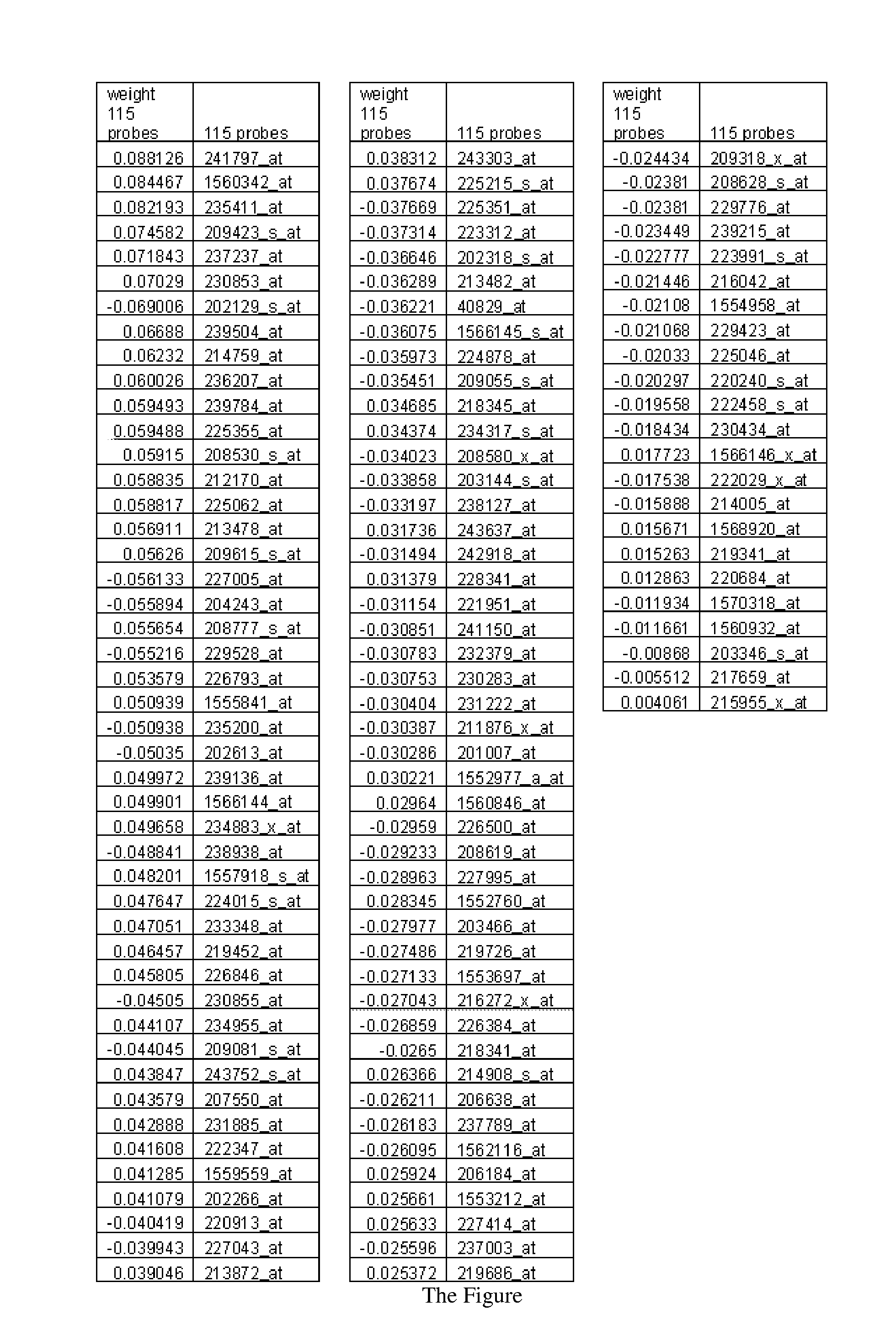Method of predicting chemotherapeutic responsiveness of cancer
- Summary
- Abstract
- Description
- Claims
- Application Information
AI Technical Summary
Benefits of technology
Problems solved by technology
Method used
Image
Examples
Embodiment Construction
[0015]“Patient” is used to describe an animal, preferably a human, to whom treatment is administered, including prophylactic treatment with the compositions of the present invention.
[0016]Disclosed is a tumor prognosis predictor based on gene expression signatures of cancer cells. Gene expression data is used to identify a patient's tumor response chemotherapeutic intervention. The invention uses cumulative expression information from a series of genes involved in the regulation of the cell cycle and the mitotic process. This information is then used to categorize tumor samples based on the chemotherapeutic responsiveness using a mathematical model and gene expression data derived from microarrays or quantitative-Polymerase Chain Reaction (Q-PCR) data. FFPE advanced stage (III / IV) serous ovarian cancers were identified, obtained during primary surgical cytoreduction from patients who went on to receive platinum-based chemotherapy. Archival formalin-fixed, paraffin-embedded tissue sa...
PUM
 Login to View More
Login to View More Abstract
Description
Claims
Application Information
 Login to View More
Login to View More - R&D
- Intellectual Property
- Life Sciences
- Materials
- Tech Scout
- Unparalleled Data Quality
- Higher Quality Content
- 60% Fewer Hallucinations
Browse by: Latest US Patents, China's latest patents, Technical Efficacy Thesaurus, Application Domain, Technology Topic, Popular Technical Reports.
© 2025 PatSnap. All rights reserved.Legal|Privacy policy|Modern Slavery Act Transparency Statement|Sitemap|About US| Contact US: help@patsnap.com



